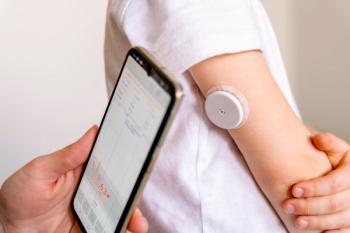
Sofosbuvir Achieves Sustained Virologic Response in HCV Patients With Cirrhosis
Study establishes real-world efficacy, tolerability, and safety profile of sofosbuvir-based regimens in patients with chronic hepatitis C who have compensated liver cirrhosis.
In a study of chronic hepatitis C virus patients with compensated liver cirrhosis, sofosbuvir, a direct-acting antiviral (DAA) nucleotide analog inhibitor of the viral NS5B protein, was effective for achieving a sustained virologic response (SVR) in the majority of patients in a community care setting. The study was led by researcher Vijay Gayam, MD, of the Interfaith Medical Center in Brooklyn, New York.
“Successful treatment of chronic [hepatitis C virus infection], also described as a sustained virological response (SVR), is defined as an absence of detectable hepatitis C virus RNA 12 weeks after the completion of treatment. [Chronic hepatitis C] patients who achieve SVR have both lower rates of complications and lower overall mortality,” the investigators wrote. “Until recently, chronic [hepatitis C virus] treatment was primarily based on interferon-based regimens, but disappointing response rates, particularly amongst patients with advanced liver disease, necessitated the need for a new regimen.”
A total of 112 patients with chronic hepatitis C virus and compensated liver cirrhosis who received 12 weeks or more of combination hepatitis C virus treatment in a community clinic were included in the retrospective analysis. Combination regimens included either 90 mg/day of ledipasvir (LDV) plus 400 mg/day of sofosbuvir (SOF) ± 1000 mg/day (for <75 kg) (n = 87) or 1200 mg/day (for ≥75 kg) ribavirin (RBV) or 400 mg/day SOF plus 100 mg/day velpatasvir (VEL) (n = 25). Treatment durations were either 12 weeks (n = 98) or 24 weeks (n = 14).
The investigators assessed the safety and tolerability of therapies by retrospectively reviewing adverse events, treatment completion, dosage reductions, and medication discontinuation. Additionally, they compared pre- and post-treatment patient characteristics as well as treatment efficacy and 12-week SVR (SVR12). An undetectable viral load at 12-week follow-up comprised the SVR12. Response to therapy was evaluated using HCV RNA viral load (IU/mL) at 4-week intervals, following treatment completion, and 12 weeks after treatment.
On average, approximately 90% of patients who were treated with the DAA combination regimens achieved SVR12. In the LDV/SOF arm, 89.7% achieved SVR12, whereas 92% of patients in the SOF/VEL group achieved SVR12.
Click to continue reading on
Newsletter
Stay informed on drug updates, treatment guidelines, and pharmacy practice trends—subscribe to Pharmacy Times for weekly clinical insights.




















































































































































































































